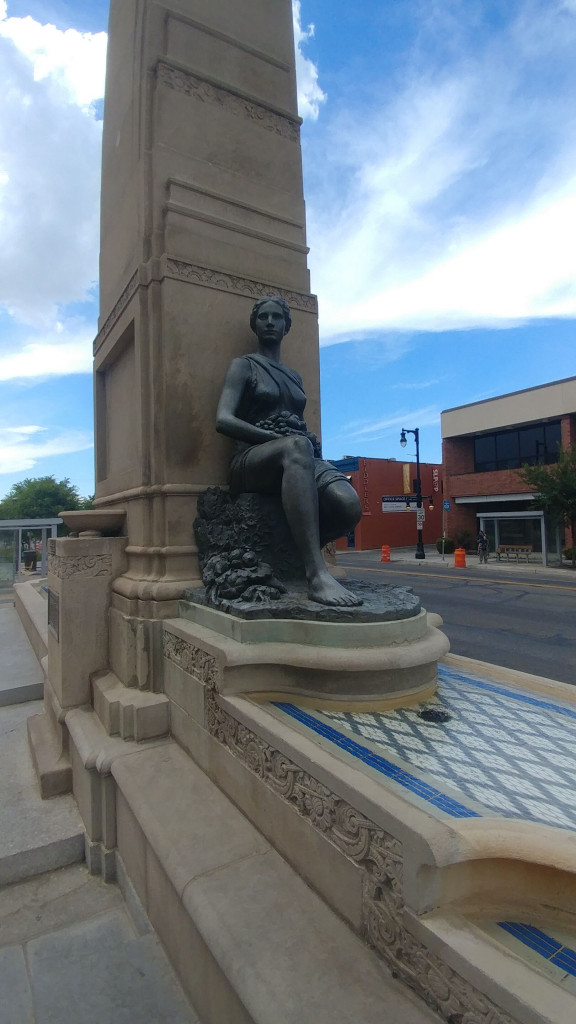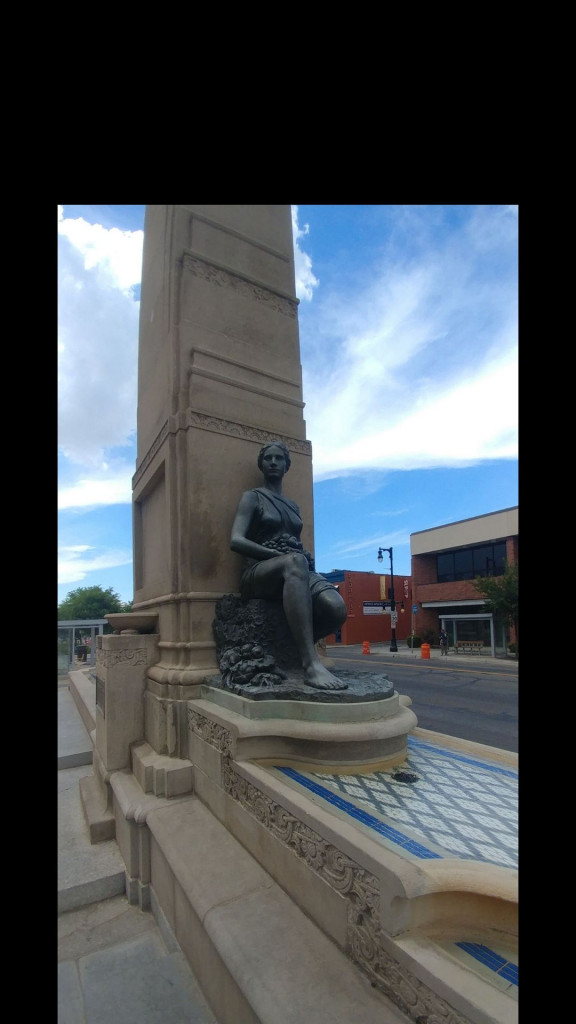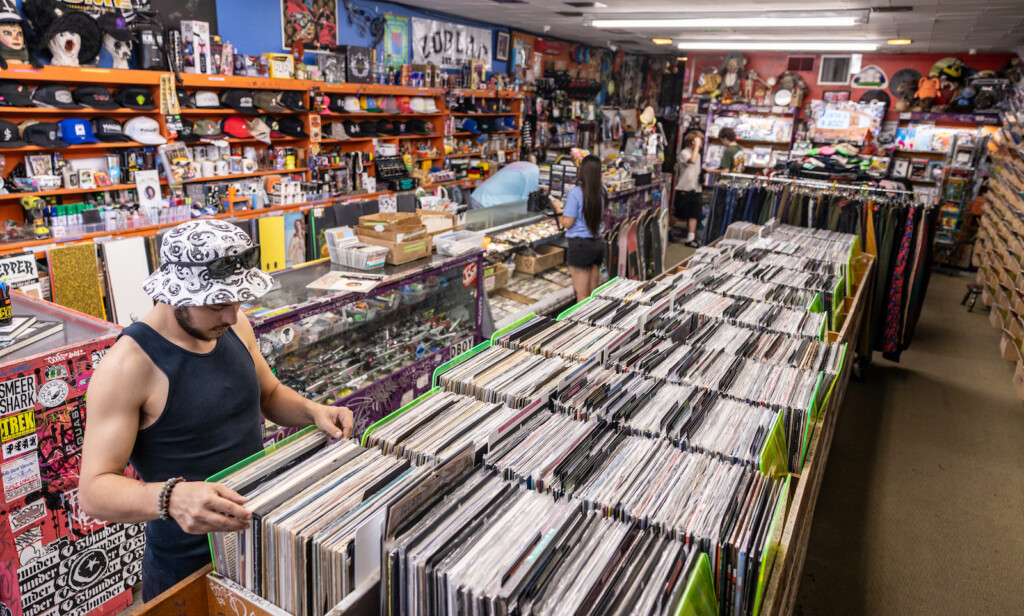
It’s known as the Sugar House Monument: an art deco obelisk with bronze statues and flowing water features at its base. Fifty-five feet high and 60 ft. wide, the monument is a cultural marker for Sugar House residents, and was likely an abomination to traffic engineers with its placement in the middle of the busy intersection of 2100 South and 1100 East, at least until the plaza around it was redesigned several years ago.
It stands today as an example of the long history of public art in Utah pushed forward by the vision of artists.
Leaving a mark in the depression
Early Mormon settlers planned and built downtown Salt Lake City, but the Sugar House area was used for agriculture and gradually evolved as a separate, busy hub for industry, like the first failed attempts to process sugar from beets, and the rail lines that served the many warehouses in the area.
After studying sculpture at the University of Utah, and dropping out of art school in New York, Utah native Millard F. Malin returned to Salt Lake City in the late 1920s during the height of the Great Depression.
An artist in need of work, Malin approached the Sugar House Business Men’s (sic) League in 1928 with the idea for the monument as a tribute to “early Utah industry.”
The Business Men’s League partnered with Salt Lake City and commissioned the work.
Malin combined his sculpting talents with the architectural skills of Edward Oliver Anderson, a friend from their days at the University of Utah, and Anderson’s partner, Lorenzo Young, and work on the monument got underway.
In addition to the 50 ft. obelisk topped with a lamp, the sculpted figures by Malin depict the Native Americans of the valley proud, but now pacified at the top of the spire, and bronze statues of pioneer settlers at the base. A plaque commemorates the initial sugar producing efforts of the area (details of the monument can be found in Utah Stories August 2009 at Utah Stories.
The monument was completed in 1934, and dedicated by Heber J. Grant, then president of the Church of Jesus Christ of Latter-day Saints.
Creating today’s monuments
“The Sugar House monument isn’t so different from the public art happening today,” said Katherine (Kat) Nix, the Public Art Program Director for the Salt Lake Arts Council. “There was an artist with an idea and the work was commissioned by those who supported the idea. The monument is very site specific and public art is generally more successful when it interprets the history of a place and makes a connection with people who are in that space.”
Nix noted that the numerous public art works around the city and county are created for a number of reasons, but always with a desire to engage and activate public spaces. While new facilities built by the state, city and county all have portions of their construction budgets dedicated to public artworks, artists still propose and push forward new works in places all over the city, Nix said.
Having been inspired by the work of urban mural artists while filming a documentary in Florida, Salt Laker Renya Nelson reached out to city officials in 2017 about inviting artists to create murals in the developing Granary District of Salt Lake City. In September of 2018, with money supplied by the RDA, artists began creating murals all around the district. A similar mural project in South Salt Lake City was launched earlier that same year by the Utah Arts Alliance founder Derek Dyer, who had been inspired by street art during his travels around the country.
“I think that is a great example recently of when an artist had an idea and the stars just lined up right with the city, the Redevelopment Agency, the Arts Council and property owners,” said Nix.
According to Nix, having the city secure funding, often from multiple sources, creates better conditions for local artists than Malin apparently faced when creating the Sugar House monument. While money was available to pay the artist, political tensions at the time kept him from being paid properly for his work and the architects were never paid according to Malin’s records.
“As an organization, and working with the city, we think artists and their work are valuable to the community and we want to help set expectations and make sure they will be supported and paid fairly for their work,” said Nix. “We want to make sure there is a strong connection between artists and their commissioners.” U






